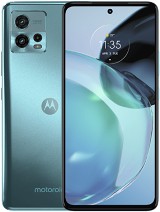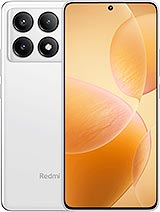Poco M6 Pro review

Large 6.67-inch, 120Hz AMOLED display
The display is definitely one of the highlights of the Poco M6 Pro. It is pretty large with its 6.67 inch diagonal. It is rocking a standard 20:9 aspect ratio with a FullHD (1080 x 2400 pixel) resolution. That works out to a perfectly sharp pixel density of around 395 ppi.

Despite the punch-hole selfie camera, The display looks quite nice in person. It is an AMOLED panel, which Xiaomi calls a "Flow AMOLED DotDisplay". Xiaomi advertises the contrast as 5,000,000:1, but in practical terms, it is kind of infinite due to the perfect blacks.
Before we move on to the 120Hz refresh rate, let's talk about some of the performance characteristics of the display we have tested, like brightness. We measured a decent, if mostly unimpressive 493 nits of brightness on the slider. The Poco M6 Pro has a proper light sensor (unlike its proximity) and adjusts its brightness automatically quite nicely. It managed to reach a maximum of 1053 nits in our standardized testing. That is impressive for the class and enough to use the M6 Pro outdoors comfortably in most scenarios. However, don't expect its display to be clearly legible in direct sunlight.
The display supports 1920Hz PWM dimming at lower brightness levels, and that should alleviate eye strain for sensitive individuals.
The Poco M6 Pro does not have HDR support on its display. It can decode HDR10, HLG and Dolby Vision on a software level. Everything except HDR10+. On a more positive note, the M6 Pro does have the highest possible Widevine L1 DRM certification, allowing apps like Netflix to offer up FullHD streams and saturate the display resolution.



HDR decoder • DRM info • Netflix playback capabilities
High refresh rate handling
The Poco M6 Pro has a 120Hz refresh rate on its display. The phone handles that by offering a few refresh rate modes in settings - 60Hz, 120Hz, and a default mode that promises to switch between refresh rates automatically. The phone can actually operate in one of three refresh rate modes - 60Hz, 90Hz and 120Hz.
60Hz mode works as expected. It just locks the refresh rate to 60Hz, and that's that. For higher refresh rate operation, you get the choice between selecting a "custom" 120Hz mode or going with the default mode. The custom 120Hz mode offers a per-app settings list that determines which apps can go to 120Hz and which ones should only stick to 60Hz. It is a really handy thing to have.
The 120Hz mode is not a "locked" mode like the 60Hz one. It does do some automatic switching, namely going down to 60Hz when there is no motion on screen, or you are not interacting with the screen. This is generally not a bad way of handling things, but it does mean that video playback is typically done at 120Hz, which wastes power.
Luckily, there is the "default" mode, which overall seems to share the same motion and interaction logic with the 120Hz mode for its refresh rate switching. However, the default mode is smart enough to recognize video playback and drop down to 60Hz as it should.
We should note that even though the Poco M6 Pro technically reports support for 90Hz refresh rate mode, we never actually saw the phone engage 90Hz mode during our testing. It just switched between 120Hz and 60Hz. It's not a major loss, but it's still worth noting.
Naturally, we tried high refresh rate gaming on the Poco M6 Pro and surprisingly had a lot of success. The titles we tried that we know can push past the 60fps mark all worked as expected in both the Default mode and 120Hz mode.
You still might want to use the latter since we found it to hold the refresh rate a bit more "strictly" since certain games like Alto's Adventure did drop down to 60Hz while we were not tapping the display to jump, which was quite jarring. The Default refresh rate mode had no such issue.

Overall, we must say that Xiaomi's system for handling high refresh rate switching is reliable and comprehensive. Between the Default mode and the 120Hz one with per-app settings, you should be able to end up with your desired resolution at any point in time. As far as general use goes, just leave the phone in its Default mode and don't worry about it.
Before we close off the refresh rate section, we should mention that the Poco M6 Pro supports 2,160Hz instant touch sampling rate.
Battery life
The Poco M6 Pro has a pretty hefty 5,000 mAh battery on board. The Poco M6 Pro did pretty well in our battery testing. Nothing spectacular, but still a solid showing. It is about on par with other recent budget devices with the same 5,000 mAh capacity. In fact, it has a better overall Active Use Score than both the Poco C65 and the Poco F5. However, the individual test distribution across these phones is kind of all over the place. The Poco F5 does have a Snapdragon 7+ Gen 2 chipset, while the Poco F5 is rocking a MediaTek chipset, just like the M6 Pro, but a less efficient MediaTek G85 model. The G99 uses a pretty modern 6nm TSMC process.
Looking at the individual test components, we do have to note that the Poco M6 Pro doesn't stand out in any particular test. It is just decent all around, but nothing to phone home about.
Charging speed
The Poco M6 Pro is equipped with a very speedy 67W Xiaomi Super Charge tech. This is actually a first for the Poco M family. The charging tech itself is quite familiar, as we've seen numerous times in the past in the Poco X and F series phones. It is sometimes called Turbo Fast Charge, and it is rated for an output between 5V and 20V at 3.25A to 6.2A.

Xiaomi provides a compatible charger in the box along with a proprietary USB Type-A to Type-C cable with an extra pin. You should probably hang on to both for the best possible charging speeds.
As per Xiaomi, these should be quite impressive. As per official data, the Poco M6 Pro should charge fully in 44 minutes. Our tests mostly back that number up.
We got our review unit from dead to 15% charge in 40 minutes, then to 71% in 30 minutes, with a full charge taming approximately 48 minutes. Not shabby at all, especially for a budget Poco M family device. It should be noted, though, that we've seen faster charging from Xiaomi's 67W tech on other models. Not by a lot, but still worth pointing out.
Speakers
The Poco M6 Pro has a stereo speaker setup. The phone actually features speaker grills on both the top and the bottom bezels. However, as far as we can tell, there aren't two dedicated speakers. The setup is actually a hybrid one with an amplified earpiece acting like the second speaker. Xiaomi just decided to add an additional "pathway" for the earpiece sound to escape. This makes this side of the speaker setup much more difficult to accidentally cover up with your palm.
On the flip side, we wouldn't say that the two speakers are particularly well-balanced. Don't get us wrong, though, the setup still sounds miles better than a single-speaker one.
In terms of loudness, the Poco M6 Pro managed a perfectly respectable -25.0 LUFS.
Quality-wise, the M6 Pro is pretty good. There is definitely some ringing of the highs and the vocals at around maximum volume, but bass, on the other hand, is quite prominent, and the tracks sound full overall.
Despite its budget nature, the Poco M6 Pro does feature Dolby Atmos tuning, which "opens up" the sound stage a bit and gives tracks a bit of a more "spacial" feel. It doesn't seem to deteriorate the quality of the sound overall.
On top of the Dolby Atmos toggle, you also get a full-featured equalizer to play around with.
Use the Playback controls to listen to the phone sample recordings (best use headphones). We measure the average loudness of the speakers in LUFS. A lower absolute value means a louder sound. A look at the frequency response chart will tell you how far off the ideal "0db" flat line is the reproduction of the bass, treble, and mid frequencies. You can add more phones to compare how they differ. The scores and ratings are not comparable with our older loudspeaker test. Learn more about how we test here.
Reader comments
- Anonymous
- 04 Mar 2025
- 80x
Bought it a month ago and it has been a blessing from god, good in every way possible for the price the only downgrade is no wireless charging
- MELCHIZEDEK
- 01 Dec 2024
- RxE
🔋Battery Life:Decent, 67 Watts Turbo Fast charging 📸Camera Quality:Reasonable (64mp Main Cam has OIS), better with GCam, 8mp Ultrawide is average, 2mp Macro Cam is for showcase ⚡Performance:Excellent for daily driver and multimedia consumption, d...



























































